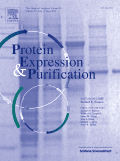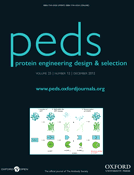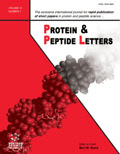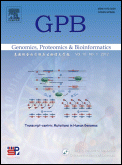
PROTEIN JOURNAL
Scope & Guideline
Transforming Insights into Biomedical Applications
Introduction
Aims and Scopes
- Protein Structure and Function:
Research focusing on elucidating the three-dimensional structures of proteins and their functional mechanisms, including studies on enzyme activity, protein folding, and conformational dynamics. - Protein Engineering and Design:
Innovative approaches to modifying proteins for enhanced stability, activity, or specificity through techniques like site-directed mutagenesis, rational design, and computational modeling. - Biochemical Characterization:
Detailed investigations into the biochemical properties of proteins, including their enzymatic activities, binding interactions, and post-translational modifications. - Proteomics and Biomarker Discovery:
Studies utilizing proteomic techniques to identify biomarkers for diseases, understand cellular processes, and analyze protein expression profiles in various conditions. - Computational Biology and Bioinformatics:
Application of computational methods for protein modeling, structure prediction, and simulations to understand protein dynamics and interactions. - Therapeutic Applications and Drug Design:
Research aimed at discovering new therapeutic agents or repurposing existing drugs through the study of protein interactions and mechanisms of action.
Trending and Emerging
- Machine Learning and AI in Protein Research:
The application of machine learning and artificial intelligence for predicting protein structures, interactions, and functions is rapidly growing, showcasing its potential to revolutionize protein science. - Drug Repurposing and Targeted Therapies:
Research focusing on repurposing existing drugs for new therapeutic applications, particularly in the context of rapidly evolving diseases like COVID-19, is gaining momentum. - Bioconjugates and Nanoparticle Applications:
The exploration of bioconjugates and nanoparticles for targeted drug delivery and therapeutic applications is an emerging area, reflecting a trend towards more sophisticated treatment modalities. - Dual-Function Antimicrobials:
Studies on peptides and compounds with dual antimicrobial and anticancer properties are trending, emphasizing the need for multifunctional therapeutic agents. - Environmental and Industrial Applications of Proteins:
Research investigating the use of proteins in environmental biotechnology, such as bioremediation and sustainable production processes, is increasingly prominent.
Declining or Waning
- Traditional Biochemical Assays:
There is a noticeable decrease in publications centered around traditional biochemical assays for protein characterization, as researchers increasingly adopt high-throughput and computational methods. - Basic Protein Expression Studies:
Basic studies on protein expression in prokaryotic systems, such as routine expression and purification protocols, have become less common as the field moves towards more complex systems and applications. - Non-Computational Structural Studies:
The prevalence of studies relying solely on experimental methods for structural analysis is declining, with a growing emphasis on integrating computational approaches for enhanced insights. - Single-Target Drug Discovery:
Research focused on single-target approaches in drug discovery is diminishing as there is a shift towards understanding polypharmacology and multi-target strategies. - Classical Protein Interaction Studies:
Classic methodologies for studying protein-protein interactions are becoming less frequent, giving way to more sophisticated techniques such as high-throughput screening and advanced imaging techniques.
Similar Journals

PROTEIN EXPRESSION AND PURIFICATION
Unlocking the Secrets of Protein SciencePROTEIN EXPRESSION AND PURIFICATION, published by Academic Press Inc. Elsevier Science, is a premier journal in the field of biotechnology. With its ISSN 1046-5928 and E-ISSN 1096-0279, the journal has been a vital source of knowledge since its inception in 1990 and continues to provide high-quality research up to 2025. Though categorized in the third quartile (Q3) for 2023 within its scope of biochemistry, genetics, and molecular biology, it serves as a valuable platform for scientists and researchers focusing on the latest advancements in protein expression methodologies and purification techniques. The journal enjoys a respectable Scopus rank of 177 out of 311 in its category, representing a 43rd percentile position that underscores its impact in the research community. While not an Open Access journal, it offers a wealth of insights that can significantly enhance one's understanding of protein biochemistry, making it a must-read for professionals and students alike engaged in this dynamic field.

PROTEINS-STRUCTURE FUNCTION AND BIOINFORMATICS
Pioneering Insights into Protein ResearchPROTEINS - STRUCTURE FUNCTION AND BIOINFORMATICS, published by WILEY, is a leading journal in the fields of biochemistry, molecular biology, and structural biology, recognized for its significant contribution to protein research since its inception in 1986. With its impressive rankings in the Q1 category for Biochemistry and Q2 for both Molecular Biology and Structural Biology in 2023, the journal serves as an essential resource for researchers and professionals seeking to explore the intricate relationships between protein structures and their functions. The journal, based in the United States, operates without an Open Access model, ensuring a curated selection of high-quality peer-reviewed articles that drive innovation and collaboration in the scientific community. Engaging with the robust content of PROTEINS not only bolsters academic scholarship but also opens avenues for groundbreaking discoveries that are pivotal in the advancing field of bioinformatics.

JOURNAL OF BIOMOLECULAR NMR
Advancing molecular insights through spectroscopy.JOURNAL OF BIOMOLECULAR NMR, published by SPRINGER, is a leading academic journal dedicated to advancing the field of molecular spectroscopy, particularly in the realm of biomolecular studies. With an ISSN of 0925-2738 and an E-ISSN of 1573-5001, the journal has been consistently publishing high-quality research since its inception in 1991, and continues to do so through 2024. The journal maintains an impressive reputation within its category, achieving a Q2 ranking in Biochemistry and a Q1 ranking in Spectroscopy as of 2023, reflecting its commitment to excellence and innovation in scientific research. Notably, it ranks 26th in Scopus for Chemistry - Spectroscopy and 198th for Biochemistry, indicating its significance in the scholarly community. Although it operates under a traditional access model, the journal serves as an essential resource for researchers, professionals, and students interested in the molecular nuances of biomolecules, offering insights that drive advances in biochemistry and related disciplines.

PROTEIN ENGINEERING DESIGN & SELECTION
Transforming Research into Real-World ApplicationsPROTEIN ENGINEERING DESIGN & SELECTION is a leading journal published by Oxford University Press that focuses on the intricate field of protein engineering, encompassing biochemistry, bioengineering, and biotechnology. With an ISSN of 1741-0126 and E-ISSN 1741-0134, this journal aims to disseminate groundbreaking research and innovative methodologies related to protein design and selection, enhancing our understanding of molecular biology and its applications in medicine and industry. With an established record from its inception in 1986 to the present, it maintains a significant influence in the academic community, reflected in its categorization in Q2 across various fields in its latest 2023 metrics. Although it is not an open-access journal, it offers invaluable insights and robust peer-reviewed contributions that are essential for both experienced researchers and emerging scholars in the field. The journal aspires to not only advance scientific knowledge but also to engage with real-world challenges through collaborative research and innovative practices, reinforcing its position in the evolving landscape of biotechnology and protein sciences.

Molecular Cell
Where Innovative Research Meets Cellular Insight.Molecular Cell, published by Cell Press, is a leading journal in the fields of cell biology and molecular biology. Established in 1997, this prestigious journal boasts a significant impact within the scientific community, evidenced by its impressive 2023 Scopus rankings, placing it in the top 2% of its field (Rank #10/410 in Molecular Biology, Rank #12/285 in Cell Biology). With a focus on cutting-edge research that bridges the gap between molecular genetics and cellular function, Molecular Cell serves as an essential platform for the dissemination of vital findings and innovative methodologies. Although it follows a traditional publishing model without Open Access options, its rigorous peer-review process and high standards ensure that articles published within these pages are of the utmost quality, making it an invaluable resource for researchers, professionals, and students alike seeking to stay at the forefront of scientific discovery. The journal's address is 50 Hampshire St, Floor 5, Cambridge, MA 02139, United States, reinforcing its commitment to fostering scientific excellence and collaboration.

BIOCHEMISTRY-MOSCOW
Unveiling Innovations in Biochemical SciencesBIOCHEMISTRY-MOSCOW is a distinguished academic journal published by MAIK NAUKA/INTERPERIODICA/SPRINGER, focusing on pivotal research in the fields of biochemistry, biophysics, geriatrics, and broader medical sciences. Established in 1972, the journal has a rich history of disseminating critical findings and innovative studies, making significant contributions to the advancement of biochemical knowledge and applications. With its Q2 ranking in various categories including biochemistry and gerontology, the journal commands respect within the scientific community, offering a reputable platform for both established researchers and emerging scholars alike. Although traditionally not an open-access journal, it provides a wealth of information accessible through institutional subscriptions, ensuring the latest advancements reach a global audience. The journal aims to enhance understanding of biochemical processes and their implications for human health, and its commitment to high-quality peer-reviewed content has established it as a vital resource for those invested in the life sciences.

PROTEIN AND PEPTIDE LETTERS
Pioneering pathways in therapeutic applications of proteins and peptides.PROTEIN AND PEPTIDE LETTERS is a prominent peer-reviewed journal published by Bentham Science Publishers Ltd, specializing in the dynamic fields of biochemistry and structural biology. With an ISSN of 0929-8665 and a corresponding E-ISSN of 1875-5305, the journal has been a pivotal platform for researchers since its inception in 1994. Spanning various aspects of protein and peptide research, it aims to disseminate groundbreaking findings that enhance our understanding of molecular mechanisms and therapeutic applications. Although categorized in the Q3 quartile for biochemistry and medicine, and Q4 in structural biology within the 2023 metrics, it remains a valuable resource in the academic arena, offering insight into the latest research and advancements. As the journal converges towards its 2024 milestone, it continues to reflect the evolving landscape of molecular research. While it currently does not offer open access, the accessibility to its impactful content is essential for students, professionals, and researchers invested in these critical scientific disciplines.

PROTEIN SCIENCE
Pioneering Insights in Biochemistry and Molecular BiologyPROTEIN SCIENCE, published by Wiley, is a premier journal dedicated to the field of biochemistry, molecular biology, and medicine, boasting an impressive impact factor that reflects its influence and importance within the academic community. Established in 1992, the journal has continuously provided a platform for high-quality research, with a current classification in the top quartile (Q1) for its critical contributions to the understanding of protein structure and function, as well as its applications in health and disease. With a Scopus ranking placing it in the 91st percentile among its peers, PROTEIN SCIENCE publishes cutting-edge studies and reviews that are essential for researchers, professionals, and students seeking to advance their knowledge in protein research. Although it does not currently offer open access options, the journal remains dedicated to disseminating vital findings that support the ongoing advancements in molecular biology and biochemistry. Researchers can count on PROTEIN SCIENCE for consistently rigorous peer-reviewed content that fosters meaningful dialog and innovation in the life sciences.

GENOMICS PROTEOMICS & BIOINFORMATICS
Pioneering innovations in genomics and proteomics since 2003.GENOMICS PROTEOMICS & BIOINFORMATICS, published by Elsevier, stands at the forefront of cutting-edge research in the fields of genomics, proteomics, and bioinformatics. This esteemed journal, with an impact factor reflecting its significant influence, has embraced an Open Access model since its inception in 2003, ensuring that knowledge is freely accessible to a global community of researchers, professionals, and students. Based in China, it has been recognized for its exemplary contributions, achieving Q1 quartile rankings in major categories such as Biochemistry, Computational Mathematics, Genetics, and Molecular Biology as of 2023. Moreover, its commendable Scopus rankings position it among the top journals in its fields, with outstanding percentile performances that highlight its scholarly impact. As it continues to converge from 2003 to 2024, the journal aims to foster innovation and collaboration, making it an essential platform for disseminating vital insights and advancements in molecular life sciences.

Protein & Cell
Exploring the Frontiers of Protein and Cell ResearchProtein & Cell, published by Oxford University Press, is a distinguished international journal focusing on cutting-edge research in the fields of biochemistry, biotechnology, cell biology, and drug discovery. This open access journal, active since 2014, is dedicated to disseminating innovative findings that advance our understanding of protein functions and cellular processes, making it an essential resource for researchers, professionals, and students alike. With an impressive 2023 impact factor reflected in its Q1 ranking across multiple categories such as Biochemistry, Drug Discovery, and Cell Biology, 'Protein & Cell' stands at the forefront of scientific research, driving collaboration and discussion in the scientific community. Researchers can access the journal freely online, fostering a global exchange of knowledge and contributing to significant advancements in medicine and biotechnology. Located in the United Kingdom, the journal strives to be a pivotal platform for impactful research that influences future studies and applications.